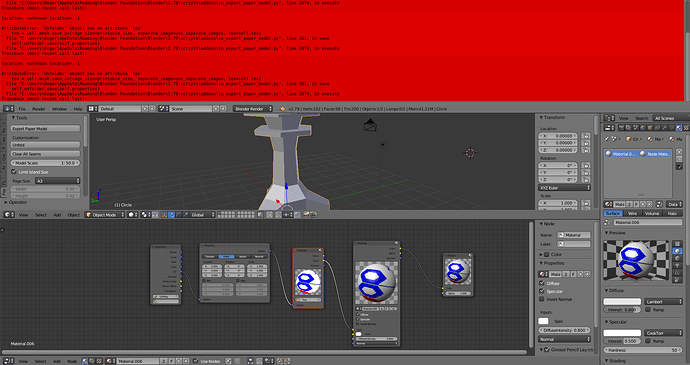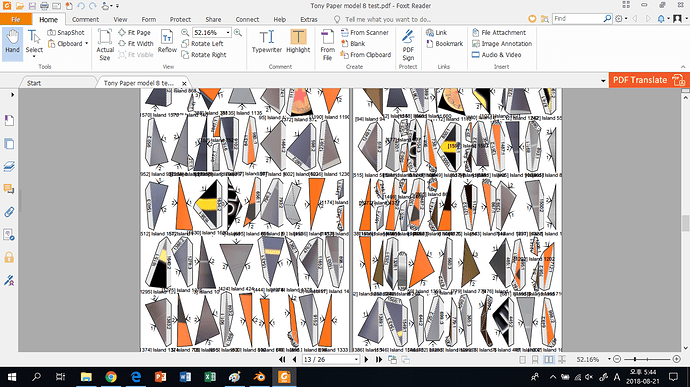Hello!
I found out about this script a couple weeks ago, and I frankly think you are absolutely amazing. People who work on these sorts of projects tend to “disappear” within a couple years (or months!) but you’re still working on this and replying and fixing it?? Such dedication!
Anyways, I spent a couple days reading up on this and trying out other programs such as Pepakura before I decided to try out your script.
I had a little knowledge on Blender before (just enough to model simple things, use certain modifiers and such. So very little compared to most of the other people here), and thought that this would be pretty easy to do.
I had a 3D model at hand that I wanted to make with paper, so I tried it out with your script.
First, I reduced lots and lots of polygons; It had around 3,000,000 polygons (!) so I reduced it to 16,466 using the “Decimate” tool. Thankfully the model shape remained almost exactly the same. (It was a model with lots of smooth bits, not details.) (Also, I just checked, the model has 59,000 “tris”. I think this might be too much to be honest…)
After a couple tries of “___ detected, use ___ to fix”, I was able to fix all the problems that the pop-ups pointed out.
But, when I tried to unfold after getting rid of all the errors, I was greeted with this message:
“Report: Invalid Input Error
Export failed. Please report this error, including the model if you can.”
So yeah, here I am. I’d love to see what this script can do, but if the model is too complicated for it, I guess I’ll have to use something else… 
Here is the file (uploaded via Pasteall.org): http://pasteall.org/blend/index.php?id=50193
How can I fix this problem? And if possible, how can I simplify it so that it becomes blockier?
EDIT: I have completely edited the entire model from the start and now have around 12,000 tris in the entire model. It works now! I guess having too many tris can screw up the script?
EDIT2: Whoops, it turns out that it only exported one part of the entire model (which was split into 3 parts). When I merge the 3 parts together and try to export/unfold, it gives me the same “Invalid Input Error”. The model currently has 12,008 tris, 11,426 faces and 8736 verts. (I have updated the link above to the newest revised one)






